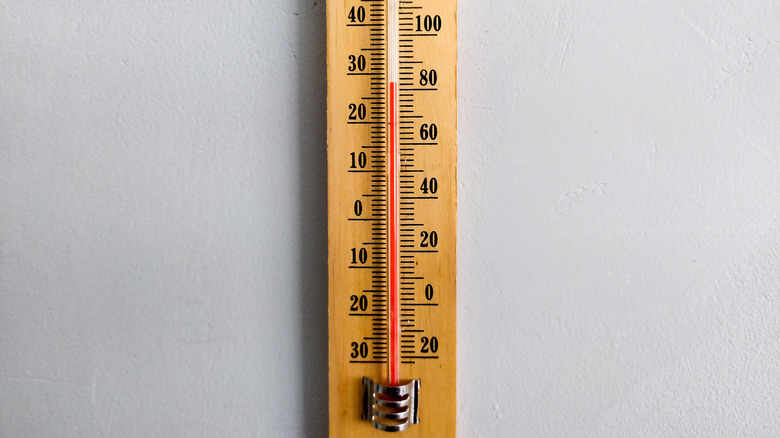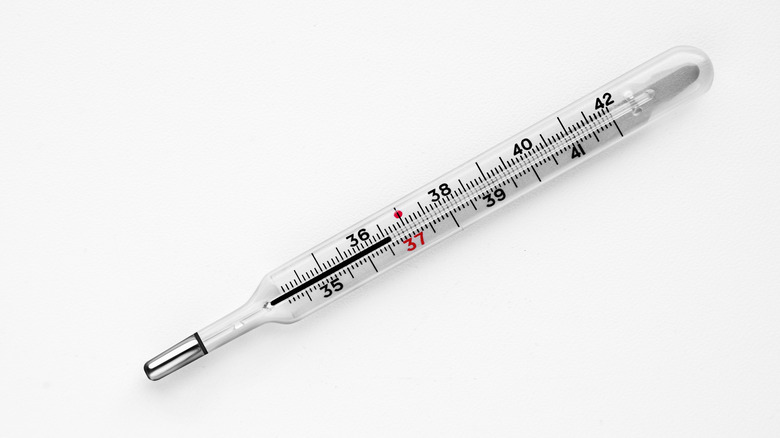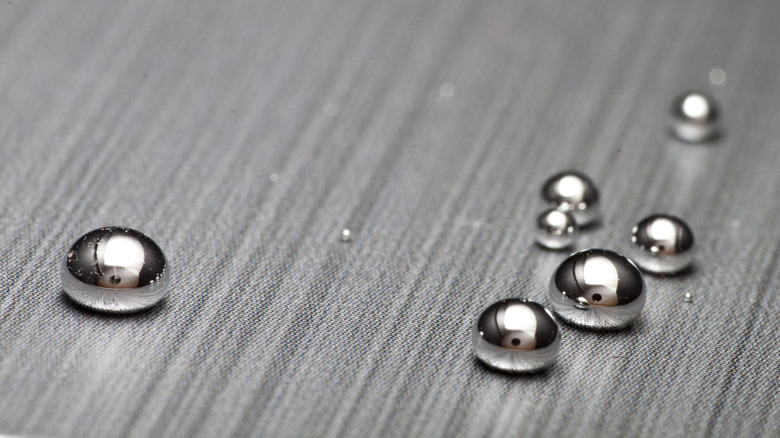The Right Way To Dispose Of Mercury Thermometers
Created by physicist Daniel Gabriel Fahrenheit in the 18th century, the mercury thermometer was unique for its quick response time compared to other thermometers of the era, explains Hunker. Despite being a major technological advancement for its time, the mercury thermometer is no longer looked upon favorably by medical and environmental professionals. Mercury thermometers were phased out for a few reasons, but mainly due to the invention of the digital thermometer, which is cheaper, faster, and, most importantly, safer.
Mercury thermometers, as the name suggests, contain mercury encased in glass, which expands or contracts in response to temperature. If the glass breaks and the mercury is ingested, though, it attacks the nervous system, which can result in a variety of symptoms, including anxiety, nervousness, memory loss, mood swings, loss of motor skills, muscle weakness, vomiting, difficulty breathing, seeing, speaking, and standing. Moreover, according to Medical News Today, childhood mercury poisoning can lead to long-term consequences, such as difficulty in learning and understanding language, loss of hand-eye coordination, and impaired motor skills.
For these reasons, mercury thermometers have been banned in many U.S. states, and homeowners have been asked to dispose of their mercury thermometers for their physical health. That does not mean simply throwing them out in the trash, though, as liquid mercury is also a major environmental hazard. If you have an old mercury thermometer and need to dispose of it, it's important to do it in accordance with local environmental guidelines.
Contact your local hazardous waste collection site
If you do have a mercury thermometer in your home, you should proceed with caution. First and foremost, the United States Environmental Protection Agency (EPA) recommends that you store it correctly before finding out where to dispose of it. Start by ensuring the thermometer isn't broken, then place it in an airtight container. Add cat litter or another similarly absorbent material to prevent it from moving around. Label it as mercury with a hazard warning, and then store it well out of reach of children.
Next, check if your local municipality has banned mercury thermometers. If they have, there will likely be instructions on what to do with yours. If not, call your local environment agency or hazardous waste facility, and they will tell you what to do next. Usually, they will schedule a hazardous waste pick-up service or offer an exchange service, which allows you to bring in an old mercury thermometer and get a new digital one in exchange.
Cleaning up a broken mercury thermometer
If you break an old mercury thermometer, Hunker points out that you should immediately clear the room of anybody who doesn't need to be there. Mercury vapors are very dangerous, especially for children, pets, and pregnant women. You will need a ventilation mask for protection, as well as an eyedropper, protective rubber gloves, paper towels, and some cardboard.
Liquid mercury will look like little metallic beads on a surface. If it's a hard surface, grab your cardboard and move the mercury beads around until it forms one big ball. Then use either an eyedropper to suck up the mercury, or two pieces of cardboard to pick it up, and place it on a wet paper towel. Put the towel in a plastic food storage bag with a ziplock. For any leftover mercury, add some tape to your gloves, sticky side out, and use it to pick up the mercury and dispose of it the same way. Again, you will need to call a hazardous waste facility for further instructions on what to do with the broken thermometer. If the mercury has soaked into a carpet or fabric, the only option is to cut out the material and dispose of it. Be sure to clean up any broken glass, and for extra safety, consider calling a home inspector to make sure there isn't any residue left behind.


